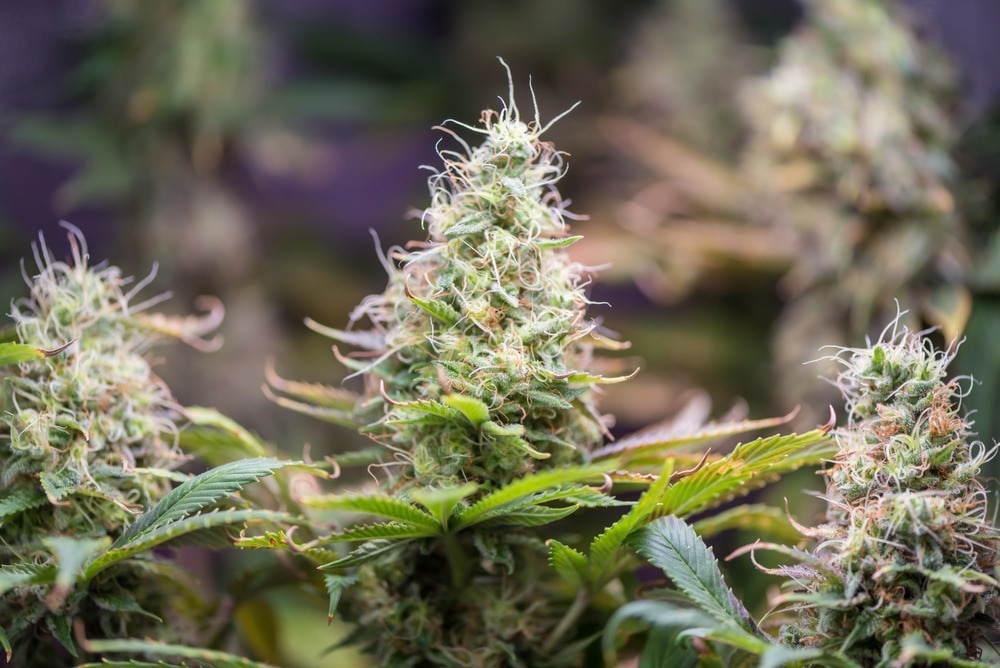Cannabis sativa and Cannabis indica are two formal taxonomic classifications of plant species of the same genus, often credited with providing differing experiences when consumed for medicinal or recreational purposes. However, extensive cross-breeding over the last several decades makes tracing the true genetic heritage of any one of hundreds of commercially available cannabis strains almost impossible, and the terms indica and sativa instead generally refer to the effect of the drug on the user.

Image Credit: noxphotos.com/Shutterstock.com
A “sativa high” is usually described as “energetic” and “heady”, while an “indica high” is more “body-focused”. The differing physiological effects of various cannabis strains are related to the concentration of numerous active compounds that may be present in wildly differing quantities, though the concentration of these compounds does not necessarily depend on Cannabis sativa or Cannabis indica heritage.
The history of the classification of Cannabis sativa and Cannabis indica will be discussed briefly below, followed by current findings related to the chemotaxonomy of cannabis strains.
Where do the terms indica and sativa originate?
C. sativa and C. indica were described by, respectively, Linnaeus (1753) and Lamarck (1785). The former species were known to exist mainly in northern Europe and were mainly used as a source of hemp rope, while the latter originated from Indonesia, southern India, and South Africa, and several subspecies were known for their psychoactive effects. Distinct morphological differences in stalk, leaf, and flower were noted between the two species, though the terms became muddled again during the 20th century when multiple botanists independently assigned various subspecies of C. sativa and C. indica to the incorrect taxonomic group based on physical attributes such as leaf shape, density, and height.
Typically, C. indica has broad leaflets, mature early, and are bushier than C. sativa, which are taller with narrower leaves, exemplified by cannabis strains from Afghanistan for the former and India for the latter. In this sense, sativa strains should be termed indica (being exemplified by strains originating in India), indica strains should be termed afghanica, while the non-psychoactive strains originating from Europe are formally of the species Cannabis ruderalis. Within these regions, cannabis plants were selectively bred by humans prior to hybridization, whereas in India, selection for potency (hashish) drove a higher THC concentration than where plants were more likely to be mass-harvested for fibers and essential oils.
These morphological distinctions have generated the alternative terms narrow-leaflet drug (NLD), indicating sativa (Indian heritage), and wide-leaflet drug (WLD), indicating indica (Afghani heritage). NLD biotypes typically contain more Δ9 -tetra-hydrocannabinol (THC) than cannabidiol (CBD), with a more sweet-smelling turpentine profile, while WLD biotypes contain a roughly equal ratio of THC and CBD, with a more “skunky” aroma. However, during the 1970s and 80s, extensive hybridization of indica and sativa strains resulted in the complete loss of some sub-species, even replacing those found growing in the wild in some locations. For example, importing Afghani hybrids into Jamaica has largely supplanted the plants of Indian heritage naturally found there.
The chemical profile of cannabis results from its genes, which, given the extent of hybridization, may or may not be indicated by the NLD or WLD biotype. In the genetic analysis of 195 cannabis strains by Lynch et al. (2015), strains were separated into NLD or WLD categories based on common polymorphic gene sites, and this categorization was compared to chemotype information relating to each strain. Interestingly, within this study, the THC/CBD ratio of NLD biotypes was 14.2% to 2.2%, while that of WLD biotypes was 16.5% to 0.2%, indicating a reversal of the ratio previously described for NLD and WLD biotypes in past decades.

Image Credit: Mc 243/Shutterstock.com
Are sativa and indica groupings meaningful?
NLD and WLD biotypes differ in the presence and ratio of cannabinoids and terpenoids, though chemotaxonomic categorization between the two groups is difficult owing to strong overlap. In a study by Hazejamp and Fischedick (2012), the same NLD and WLD strains were purchased from a coffee shop 40 times over months and compared, finding that in 20% of cases, the chemical content differed wildly. Ensuring consistency in any botanical product can be difficult, further compounded by the presence of the illicit market in the case of cannabis.
Given the broadly ranging chemical content of typical indica and sativa strains, they are often more usefully categorized based on the effect on the consumer, imparting either a “head” or “body” high. Deeper chemotaxonomic categorization incorporating the specific cannabinoid and terpenoid profile of the strain could be useful in generating a “menu” of desired compounds with regards to physiological effect and flavor, though most likely may require several or dozens of categories of distinct chemovars (chemical varieties) to form a comprehensive typology.
References:
- Hazekamp, A., & Fischedick, J. T.. (2012). Cannabis - from cultivar to chemovar. Drug Testing and Analysis, 4(7-8), 660–667. https://doi.org/10.1002/dta.407
- Mudge, E. M., Murch, S. J., & Brown, P. N.. (2018). Chemometric Analysis of Cannabinoids: Chemotaxonomy and Domestication Syndrome. Scientific Reports, 8(1). https://doi.org/10.1038/s41598-018-31120-2
- McPartland, J. M. (2017). Cannabis sativa and Cannabis indica versus “Sativa” and “Indica”. Botany and Biotechnology, pp. 101-121.
Further Reading
Last Updated: Dec 16, 2025